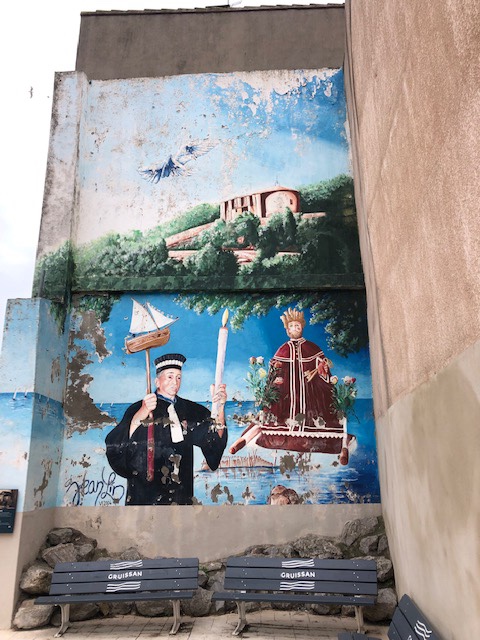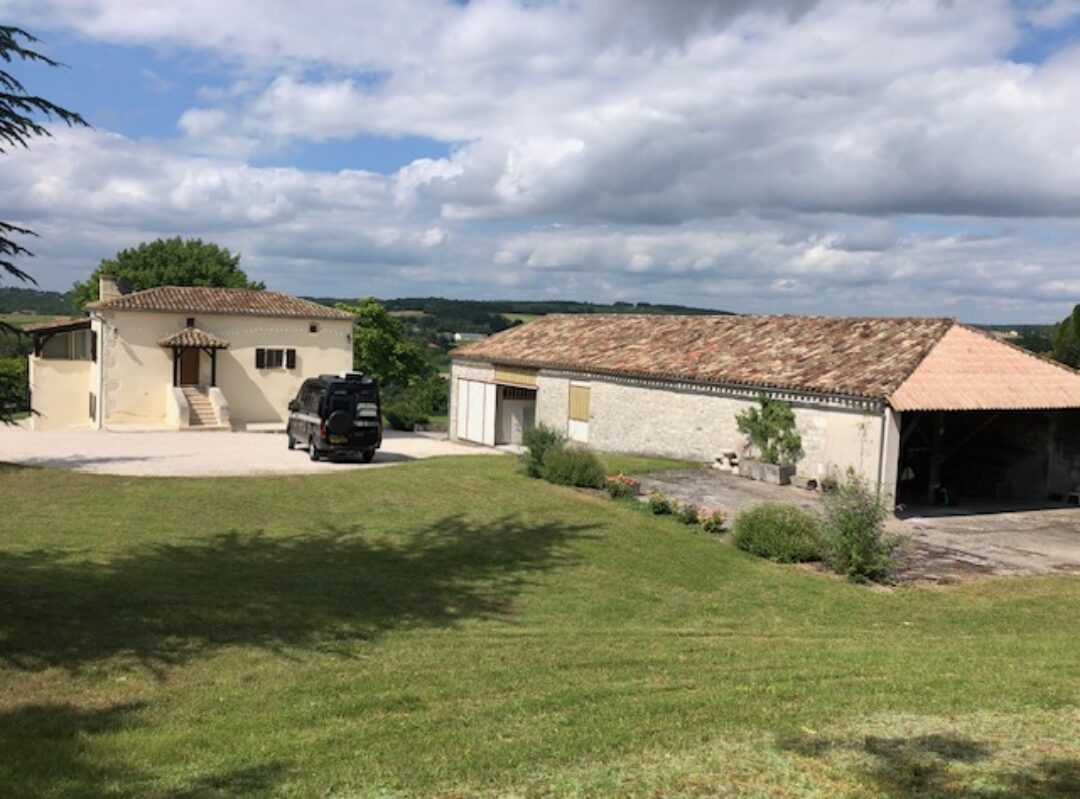After picking up the trailer we headed directly south past Narbonne to the coast. This is an area known for being windy and a strong Mistral wind had been blowing for some days. Weather forecasts were predicting rain for a week ahead but the wind seems to have kept that moving on so we’ve stayed dry, even if not upright, with greyish skies. As we mentioned when we were in the far south-west corner of France late last year, a lot of areas on the south-west coast were previously mosquito infested marshy areas that have been reclaimed over the years and developed as seaside resorts. Many towns along the coast have the old village slightly inland and a more modern ‘Village name-Plage’ town on the coast. Another feature of this part of the coast is the large lagoons (étangs), ideal for nature reserves and bird watching as well as for the production of oysters and mussels.

We made our first stop at a motorhome aire on the edge of the lagoon at Gruissan. It was still very windy at this stage and not very conducive to cycling so we explored on foot. The new pleasure port, like many of these resort villages, is pretty soulless out of season but the old village of Gruissan was authentic and lively. The village is dominated by the remains of the Tour Barberousse of the original 10th century château, built to defend seaborne invasions of Narbonne, and we climbed up to take advantage of views over the villages roof line and lagoon. Legend has it that the tower may have been named after a red-bearded 14th century pirate roaming the seas in this area. The hills between Narbonne and the coast are home to a number of wine areas including Corbières and Gruissan itself has a very good wine co-operative showcasing the local wines and produce. We bought a few bottles to supplement our stock.





From Gruissan we drove through vineyards south of Béziers to Marseillan-Plage at one end of the huge saltwater lagoon – Étang de Thau. The original village of Marseillan and its port is about 5 km away so ideal for a cycle ride past flamingos and over the Canal Du Midi where it enters the lagoon. The air smells and tastes of discarded mussel, oyster and prawn shells. Marseillan has a lovely traditional port area and the distillery of Noilly Prat, a vermouth aperitif drink has been based here for centuries. This area of what was previously the Languedoc region is known to Claire but there has been a lot of development in most of the towns,some of it to bypass traffic or to create pedestrianised areas. At the distillery it is possible to buy a couple of different types of Noilly Prat that aren’t sold elsewhere, including an Ambré version, enjoyed best chilled as an aperitif, or used as a base for cocktails. We didn’t choose the cocktail bar option for our new van but the fridge chills the neat aperitif down very nicely!




We stayed another day at the site to do a much longer bicycle ride along the coastal edge of the lagoon to Sète with its distinctive Mont St Clair hill rising 175 metres above the port. The road used to go directly alongside the beach and it was possible to park there but the road has been diverted and a cycle path created in order to protect and allow the reestablishment of the sand dunes.

We eventually arrived at the port of Sète, also known as the Venice of the Languedoc because of its system of canals. That may be stretching it a bit but there are certainly some grand and colourful houses along the canals. It is also the eastern point where there Canal du Midi meets the Mediterranean Sea. The port area is a bustling mixture of a trade port with serious sea-going fishing trawlers, pleasure sailing boats and traditional wooden painted boats. It’s also the birthplace of the famous French singer George Brassens. Nearly every business along the port side is a restaurant with menus predominantly fish based with fresh produce grown on the lagoon or landed at the port.

We also visited the small town of Mèze which sits on the inland side of the lagoon and passed by the village of Pinet, home of the vines of one of my favourite white wines, Picpoul de Pinet, now popular in the UK as well and an excellent pairing with shellfish. But the producers of wine grown so close to a seafood area would say that! At Mèze the frames and posts where the mussels and oysters are grown are clearly visible. Even though it’s early in the year, the insects are already biting in the evening and it seems there is still a battle to keep them under control in this area.


